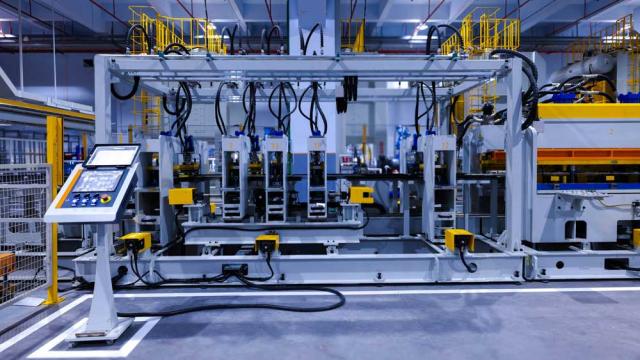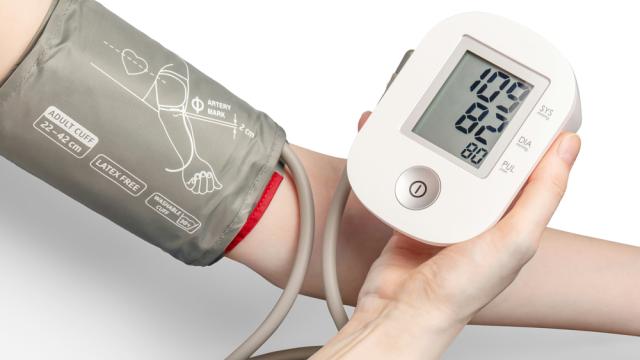All Features

Chris Rush
The U.S. Food and Drug Administration (FDA) recently published new guidance on conducting clinical trials with decentralized elements. It offers recommendations for sponsors, investigators, CROs, and other parties that are interested in implementing decentralized clinical trials.
By issuing this…

ISO
From small family-run companies to tech giants, the business world is changing at an unrelenting pace. Amid a constantly evolving economic landscape and sometimes dizzying technological advances, one thing remains constant: the need to maintain the highest level of quality.
Whether manufacturing a…

James Chan
Construction is an asset-intensive industry. Companies depend on building equipment, power tools, construction vehicles, and all heavy machinery for essential functions like excavation, construction, and demolition. This equipment must always be kept in safe, proper, and optimal working order so…

George Thuo
Data breaches and cyberattacks are things that small to medium-size manufacturers think won’t happen to them. Yet, according to the Verizon 2023 Data Breach Investigations Report, 43% of all cyberattacks are conducted against small businesses.
If that doesn’t grab your attention, consider this…

Chris Rush
While clinical trials are the gold standard for generating clinical data to use as evidence of your medical device’s safety and effectiveness, they are by no means the only way to gather clinical evidence.
Real-world data (RWD), which typically come from routine healthcare delivery or…

Stephanie Ojeda
In the highly regulated world of life sciences, data integrity isn’t optional; it’s essential. The ALCOA principles—attributable, legible, contemporaneous, original, and accurate—provide a foundational framework for ensuring data are reliable and trustworthy.
With the rise of digital…

Adam Zewe
In the 1960s cartoon series The Jetsons, Rosie the robotic maid seamlessly switches from vacuuming the house to cooking dinner to taking out the trash. But in real life, training a general-purpose robot remains a major challenge.
Typically, engineers collect data that are specific to a certain…

Adam Zewe
Despite their impressive capabilities, large language models (LLMs) are far from perfect. These artificial intelligence models sometimes “hallucinate” by generating incorrect or unsupported information in response to a query.
Due to this hallucination problem, an LLM’s responses are often verified…

Jones Loflin
Recently, while driving through North Dakota on a crisp fall evening, I found myself surrounded by the sights and sounds of harvest. Combines and trucks moved through golden cornfields, reaping the season’s bounty. I imagined the farmers, exhausted but satisfied, reflecting on the season’s…

James Chan
Facility and equipment maintenance is most effective when performed proactively and regularly. This kind of routine maintenance can take many forms, ranging from the most basic approaches to complicated strategies using sensors and data to trigger maintenance. Time-based maintenance (TBM) is a…

Gleb Tsipursky
The recent $22.1 million verdict in the case of Billesdon vs. Wells Fargo Securities has cast a spotlight on the increasing legal risks companies face when they ignore work-from-home (WFH) requests under the Americans with Disabilities Act (ADA). This landmark case underscores the critical need for…

Mohammad Mahdi Zare
Remote work is now an essential part of the modern workplace, offering flexibility and convenience to millions of employees worldwide. However, with this shift to home offices and flexible workspaces comes a new set of security challenges. Remote workers face a unique set of risks, and businesses…

Mei Lee Ngan
I once transformed my face to look like Ron Swanson—for science.
I never thought disguising myself with wigs and makeup would be part of my job, but as a NIST facial recognition researcher I sometimes do just that. To make myself look like the gruff character from the show Parks and Recreation, I…

Zach Winn
Most doctors go into medicine because they want to help patients. But today’s healthcare system requires that they spend hours each day on other work—searching through electronic health records (EHRs), documenting, coding and billing, gaining prior authorization, and evaluating services—that often…

Michael Mills
You’ve finally gotten ISO 9001 certification. Congratulations! You’ve built your quality management system, written your procedures, trained your staff, sweated through internal and external audits, and your registrar sent you a certificate suitable for framing. Now, at long last, all of your…

Scott Crow
W ithin the utility industry, regional entities increasingly focus on internal controls as a measuring stick for overall compliance performance.
Developing and executing rock-solid internal controls with an automated compliance management software solution can help maintain compliance, not only…

Rob Moorey
Biomedical equipment technicians (BMETs) are facing increased workloads and staffing shortages that are expected to get worse as the current workforce retires.
About one-third of healthcare technology management (HTM) professionals are older than 55, putting pressure on health systems to attract…

ISO
Modern-day security breaches, such as the SolarWinds or T-Mobile attacks, aren’t one-off events; they are prime examples of how someone can steal your organization’s credentials and use them to gain illegitimate privileged access to sensitive assets. Data breaches happen daily, and in too many…

Harish Jose
In this article, I’m looking at Weber’s Law. It’s named after Ernst Heinrich Weber (1795–1878), a German physician who was one of the pioneers of experimental psychology. I highly recommend the Numberphile YouTube video that explains this in detail.
A simple explanation of Weber’s Law is that we…

Steve Ilmrud
As we approach 2025, one of the most pressing challenges manufacturers face is a growing labor shortage. Research anticipates that 1.9 million jobs will go unfilled during the next decade. This issue, compounded by the retirement of experienced workers and the lack of interest from younger…

James Chan
Asset maintenance isn’t just about fixing things when they break. It’s a complex mix of strategies, both proactive and reactive. Finding the most cost-effective blend makes all the difference in the success of your maintenance program and your business as a whole.
Whether your team is scrambling…

ISO
Cybersecurity has become increasingly critical in the digital age as organizations across all sectors face growing threats from cybercriminals.
Imagine that hackers breached a small healthcare practice through “phishing”—sending a scam email and gaining access to sensitive patient data, including…

Julie Gowthorpe
Management goals commonly include maintaining harmonious work environments that make employees happy and motivated. But how do you achieve this when people don’t get along? “Sort it out on your own” is no longer an option when employees are in conflict. As teams grow and experience turnover, a…

ISO
ISO and the United Nations Development Program (UNDP) have unveiled the world’s first international guidelines to help businesses and organizations expedite their contributions to the U.N.’s sustainable development goals (SDGs).
New guidelines for urgent action
The ISO/UNDP guidelines for…

Thierry Mantel
Metal cold-rolling is a critical process in manufacturing various steel and aluminum products. As manufacturers look for ways to modernize and streamline their manufacturing and quality control processes, digital technologies are poised to transform the metal cold-rolling industry by offering…